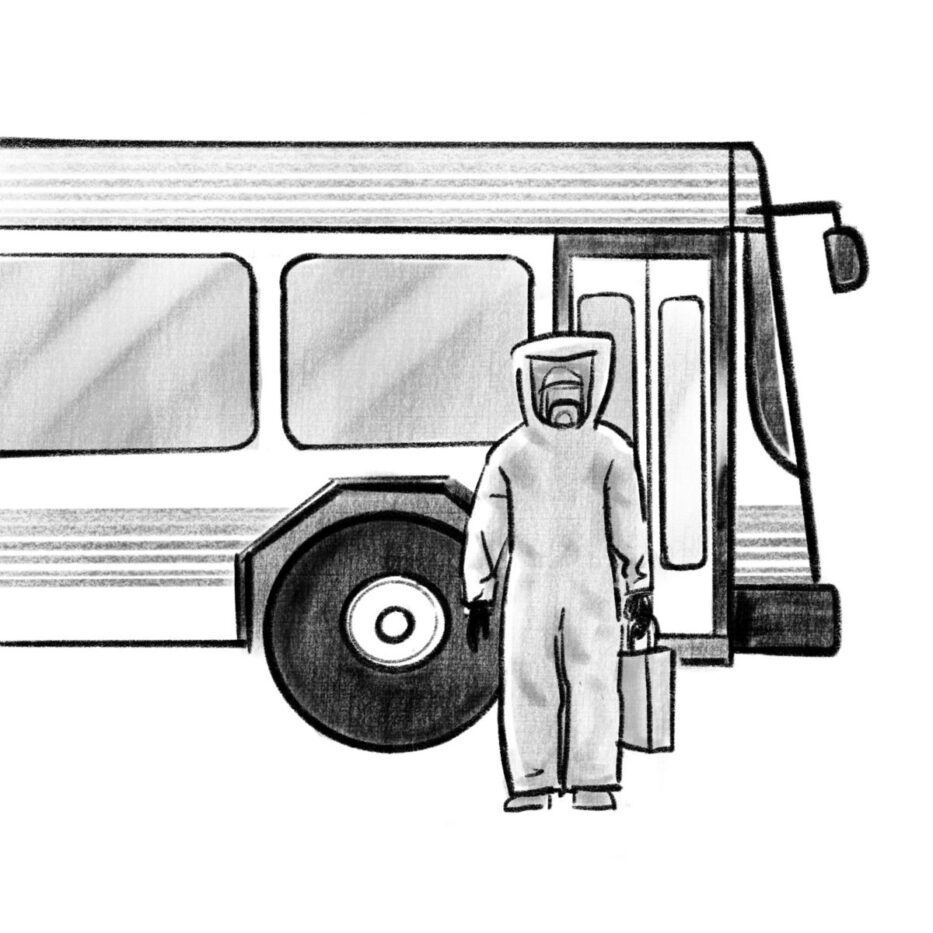
Image by Ivy Sanders Schneider

Image by Ivy Sanders Schneider
The passage of the Inflation Reduction Act and the permitting deal have the potential to jump-start a golden age of energy infrastructure — not just solar farms and wind farms but geothermal facilities, nuclear plants, carbon capture projects, offshore and onshore oil rigs, natural gas pipelines, natural gas export terminals, lithium and rare earth mineral mines, battery manufacturing facilities, biogas processing plants, electric vehicle assembly lines, and more will now be easier and cheaper to build than they have been in a long time. Every one of these facilities will be located somewhere, and thus will be near something — there will be a city a few miles away from the new gas pipeline, a town in the shadow of the new oil derricks, a tribal village right next to the lithium mine. The paradox of energy is that it needs to be moved everywhere, but it can only be generated in a few specific somewheres. The people who live in those somewheres bear different costs and enjoy different benefits than the rest of us — they get to work in the gas plant for good money, sure, but they also breathe in the toxic chemicals.
The balance of costs and benefits for people who live in what the Inflation Reduction Act calls “energy communities” has historically been quite bad, and environmental justice advocates have taken to calling these communities “sacrifice zones,” places where people are condemned to sickness and death so the rest of us can keep our refrigerators running. If the de facto climate policy of the Inflation Reduction Act has one glaring hole, it is that it does little to mitigate harm to these communities. It induces us to build without regard for where, or next to whom, we do so. For most of the twentieth century, sacrifice zones were being sacrificed at the altar of domestic economic prosperity. We needed to drill for oil and gas, refine petroleum products, manufacture ammonia, and fabricate plastic so we could keep driving to the movie theater and buying Tupperware and resting easy knowing our children would be wealthier than we were. Many of the same communities will still suffer under the new regime, but the calculus will be different — they will be suffering in service of nobler causes.
The first cause is the salvation of Europe, which needs to replace Russian oil and gas, and fast. Twenty years ago, the United States could not have helped with this, but the repeal of the oil export ban in 2015 and the rise of the liquefied natural gas export industry have turned the nation into a powerhouse exporter of fossil fuels. Even as our domestic economy gets greener, fossil fuel barons and their advocates will continue to argue we need to pump up production so as to feed the needs of our partners abroad — not just Europeans but those in the developing world as well. To choke off further extraction of oil and gas would be a foreign policy as well as a climate policy, one that would make the lights flicker in the United Kingdom and Germany. The second cause, and the one with greater longevity, is the energy transition itself. It’s no secret that producing polysilicon solar panels, lithium-ion batteries, and electric vehicles requires the extraction of lithium, copper, cobalt, rare earth metals, and more — processes that are devastating for the environment; the refinement and manufacturing of these metals is also an ugly and emissions-intensive process. At least for the foreseeable future, a wholesale adoption of clean energy will require a lot of resource extraction, very fast, much of it near vulnerable communities, not to mention the construction of numerous large power transmission lines on untouched land.
None of this means that we should cut Europe off oil and gas cold turkey, or that we should slow down the adoption of solar panels and electric vehicles. Every policy decision is to some degree an analysis of benefits and costs, and the costs of leaving Europe out in the cold or sticking with fossil fuels for another generation are tremendous. The status quo already inflicts massive and irreversible harm on the residents of places like Louisiana’s Cancer Alley, a warren of oil refineries and ammonia plants. That said, a successful climate policy would compass not just a transition to renewable energy but also a full accounting for all the harms and impositions that the production of energy entails. The Inflation Reduction Act might never have passed had it not turned such a blind eye to these injustices, had it not embraced an “all of the above” energy strategy without considering the externalities of that strategy. But it will be the task of the next generation of climate activists and organizers to undo those harms without slowing the progress of the transition itself.
Many people in the climate space, on the left as well as the center, have long been wont to see environmental justice as a secondary concern, ancillary to the grand question of carbon. As a result, this year’s great leap forward was to some degree a Faustian bargain, one that defers a true reckoning with environmental harm to a later date. If the American climate movement has every reason to celebrate its first major victory, it also has reason to reflect on the great social debt that remains to be paid off, and on how much that debt may grow in the years to come, even as emissions fall.
Jake Bittle is a staff writer for Grist covering climate impacts and adaptation. His book The Great Displacement is forthcoming from Simon & Schuster in February 2023.